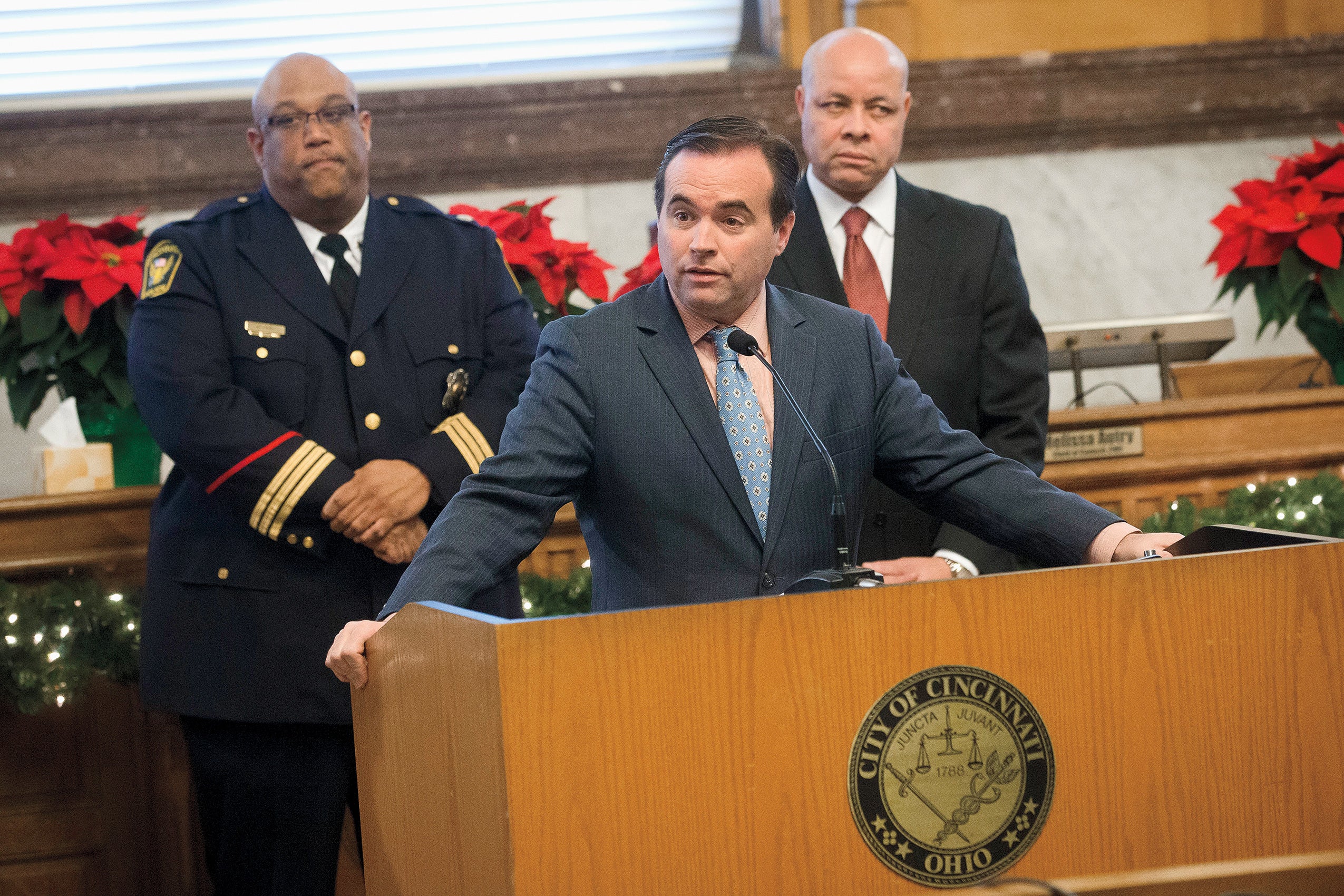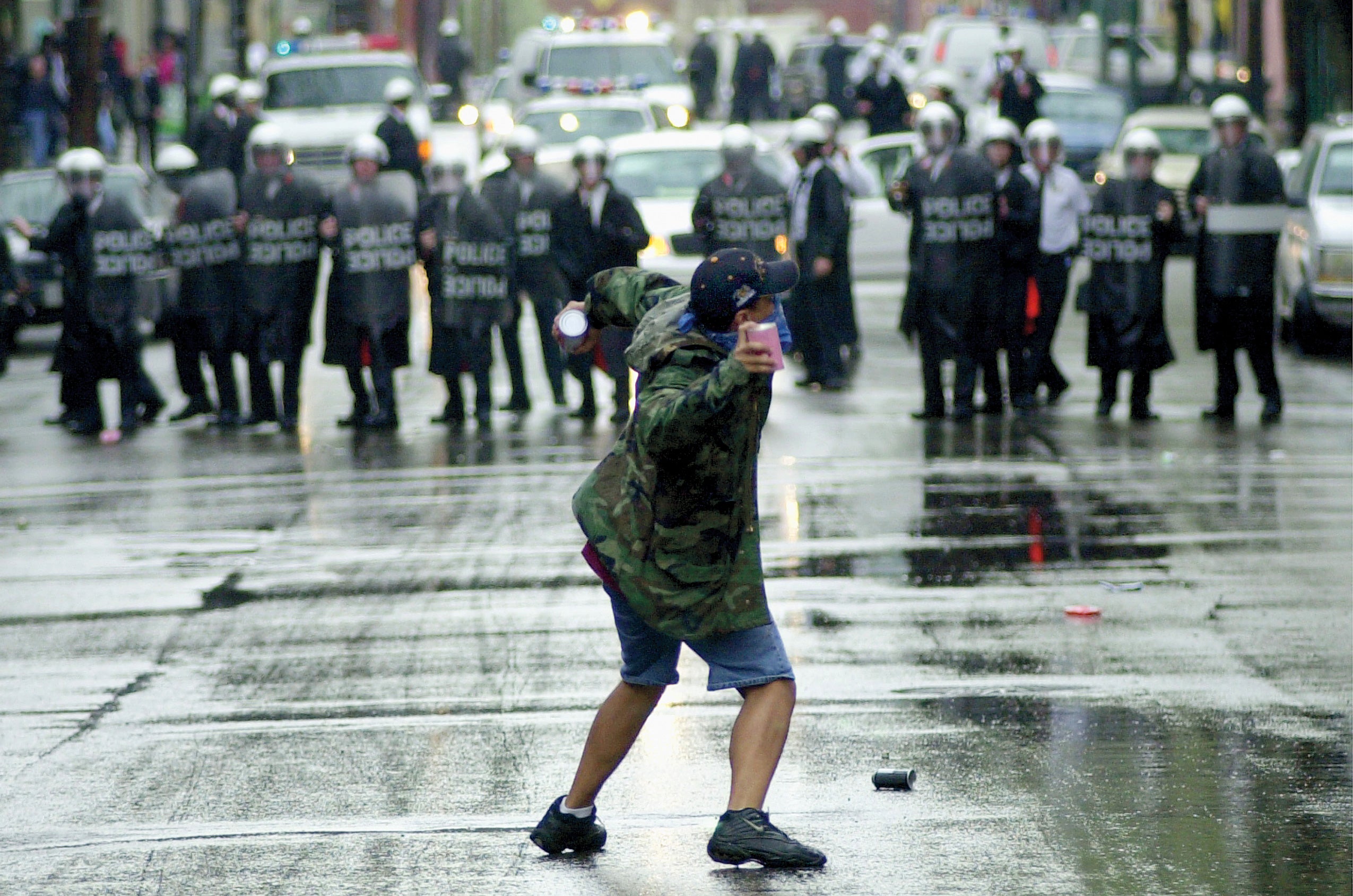Now in its 14th year, a compact on policing in Cincinnati, Ohio, focused on building strong police-community relationships is a lauded model nationwide. John Cranley ’99, now the city’s mayor, was there from the start of the landmark agreement known as the Collaborative.
In April 2001, a white police officer in Cincinnati shot and killed 19-year-old Timothy Thomas, an unarmed black man, while attempting to arrest him for nonviolent misdemeanors. The killing set off four days of rioting and civil unrest. At the same time, local civil rights leaders were pursuing a federal lawsuit alleging racial profiling by the Cincinnati Police Department.
This plunge into crisis was a “baptism by fire” for a new member of the City Council. John Cranley had graduated less than a year earlier from Harvard Divinity School, and before that from HLS. He recalls how then Mayor Charlie Luken took the novel step of asking the Department of Justice to intervene and review the CPD’s policing practices, a “controversial move that was clearly the right decision,” Cranley says. “Clearly there had to be reforms—half the population of the city was black and was not receiving fair treatment.”

The early years were very rough, Cranley recalls. The Citizen Complaint Authority was flooded with complaints at first. The CPD dragged its heels, resisting change. Yet “everyone wants the police to be successful,” Cranley notes. “Community residents want good relations with police. They want strong law enforcement, but they want it targeted to violent crime, not kids who’ve made a stupid mistake.”
Saul Green, the DOJ-appointed independent monitor, kept pushing for improvements. New leadership in the city helped. So did the CPD’s adoption of the problem-oriented policing method, which Cranley says “did a lot to break the ice” by pulling police and local residents together to respond to and fix crime and disorder problems in the community. One example: Police and community residents together pressured a bad landlord to stop allowing drug dealing in a public housing location that had made an elderly woman too scared to walk out her door.
By 2006, “there was a sea change,” and the key Collaborative elements were all operative, says Cranley, including an advisory group representing all stakeholders. Its members to this day meet regularly and talk often—because no one takes Cincinnati’s hard-fought reforms for granted. “We can always do more,” Cranley says.
A major test of Collaborative relationships came just last year, on July 19, after University of Cincinnati Police Officer Ray Tensing while on patrol shot and killed 43-year-old Samuel DuBose, a motorist. Video from Tensing’s body camera showed he tried to get DuBose out of the car and reached in; DuBose began to drive away and the officer fired one shot, hitting him in the head. Thanks to 14 years of building communication channels, the 10 days leading up to the announcement of the prosecutor’s decision to indict remained calm, and the community felt the legal outcome was just, says Cranley.
Elected mayor in 2013, Cranley is outspoken about his commitment to keeping the Collaborative strong and continuing problem-oriented policing, which he says got a boost from the recent appointment of a longtime CPD officer and Cincinnati resident as the new chief.

Cranley likewise has local roots. He grew up in Cincinnati’s Price Hill neighborhood and then attended John Carroll University in University Heights, serving twice as class president, before going on to earn his J.D. and a Master of Theological Studies degree at Harvard.
At HLS he worked for clients who couldn’t afford legal counsel through the Harvard Legal Aid Bureau, and at Commencement he gave the class address. Then Cranley returned to Ohio, where he practiced law at the firm Keating Muething & Klekamp and co-founded the Ohio Innocence Project at the University of Cincinnati College of Law, serving as administrative director from 2002 to 2006. In one case, he successfully argued before Ohio’s 5th Appellate District Court to overturn Christopher Lee Bennett’s conviction of aggravated vehicular homicide; to date, the project has helped free 23 individuals.
While serving on the City Council, Cranley also spearheaded expanding Cincinnati’s hate crime ordinance to cover acts of violence, hatred, and bigotry against individuals on the basis of their gender identity and sexual orientation; he was galvanized in his efforts by the 2002 murder of a young gay black man walking toward a nightclub with friends, two in drag.
Cranley gets immense satisfaction from how far his city has progressed in building police-community trust and collaboration since the firestorm of outrage he helped resolve at the start of his nine years on the City Council.
“Community residents want … strong law enforcement, but they want it targeted to violent crime, not kids who’ve made a stupid mistake.”
Last year, in fact, the “Queen City” was chosen to host a two-day meeting of President Barack Obama’s Task Force on 21st Century Policing in recognition of the Collaborative, which Ronald Davis, executive director of the task force, called “a framework on how to build … trust so we can really strengthen public safety in this country.”
“I was 26 when the crisis erupted in 2001; now I’m 42,” says Cranley. “I feel the changes on both sides. The biggest difference between then and now is how the civil rights leaders who once marched to City Hall protesting against the cops are now marching arm in arm with them, making sure streets are safe, working to get the troubled kids they all know on a better path in life.”
